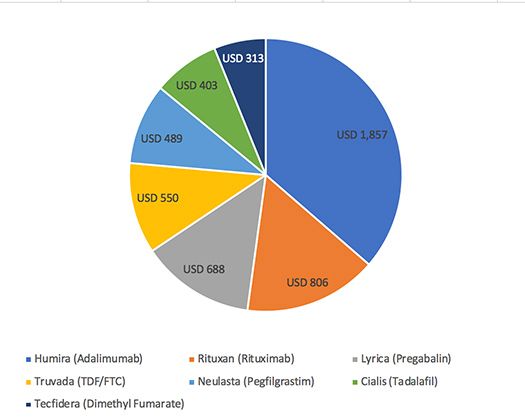ICER Names Drugs with Unsupported Price Increases
Leela Barham reacts to the Institute for Economic and Clinical Review's very first Unsupported Price Increase (UPI) report.
Back in February of this year, the US-based, not-for-profit Institute for Economic and Clinical Review (ICER) set out details for their work to look at whether there was new evidence to support price increases in drugs that had seen the biggest impact on spending on drugs in the US during 2017 and 2018.
ICER says it has been asked a lot about price increases and whether they are supported or not. So the organization sought funding and has put in place a new workstream to look into it.
The mechanics are not straightforward. There are a lot of drugs to look at. There are the intricacies of trying to work out prices and their changes over time in the US market. And there is the question of just how best to find and then judge if there is new clinical evidence that could – in theory at least – show that drugs offer more value than originally expected, and that could help explain why their prices go up. There are also other factors that can affect pricing, but ICER hasn’t looked at them all, and that’s an easy hole to pick in its methodology.
In ICERs defence, the organization is not obliged to explain everything; companies were invited to share information and play a part in explaining what’s going on with the pricing of their drugs.
On October 8, ICER released its very first Unsupported Price Increase (UPI) report – also referred to a as “list of shame” - naming drugs that have seen the biggest increases yet without good new clinical evidence to back them up. On the list are some big names: AbbVie’s Humira, Genentech’s Rituxan, Pfizer’s Lyrica, Gilead’s Truvada, Amgen’s Neulasta, Eli Lilly’s Cialis and Biogen’s Tecfidera.
(See icer-review.org/wp-content/uploads/2019/01/ICER_UPI_Final_Report_and_Assessment_100819_Final.pdf)
The price increases for these drugs range from 10 to 33% depending upon whether it’s based on the weighted average cost (WAC) or the net price from Q4 of 2016 through to Q4 of 2018 (Figure 1).
Figure 1: Price increases for drugs with price increases unsupported by new clinical evidence
Source: Data from ICER Table ES1

Collectively, these price increases accounted for US$5,106 million in spending over two years, with Humira accounting for the biggest share (Figure 2).
Figure 2: Increase in spending impact due to net price change (US$m)
Source: Data from ICER Table ES1

ICER also looked at Genvoya (EVG/COBI/FTC/TAF) and Revlimid (Lenalidomide) but found that there was good, new clinical evidence for these drugs. ICER qualifies this with the statement that this does not mean that the new evidence necessarily justifies the price increases for these drugs.
The first UPI report lists all the price and spend data that ICER has looked at. ICER also sets out details on the clinical evidence it looked at for each drug. In some cases, as for Humira, what the company shared was not seen as new or simply not good enough to count. AbbVie shared 204 references with ICER and none of them were included.
Similarly, ICER excluded all 143 references from for Rituxan from Genentech. For Pfizer’s Lyrica, ICER’s own searches found 608 potentially relevant references but they didn’t meet their inclusion criteria. Gilead gave ICER 11 references for Truvada, none of those made it either. Amgen’s 12 references for Neulasta didn’t make the grade either. ICER searched themselves for new clinical evidence for Eli Lilly’s Cialis coming up with 317 potentially relevant references, just as for Lyrica, they didn’t meet the criteria ICER set. One of Biogen’s 29 references made the grade for Tecfidera.
As you’d expect the report is creating noise. Words like “offender”abound in media coverage.
The National Pharmaceutical Council (NPC) uses troubling, incomplete, and inadequate evidence in their response (www.npcnow.org/blog/latest-icer-report-relies-incomplete-evidence-inadequate-analyses). ICER includes comments from companies in their appendices of the report, so they even help readers to see what issues companies have with what they have done.
ICER is no stranger to generating debate. It’s exactly what it is aiming to do with this piece of work; the organization wants to provide the pubic and policymakers with information that they can use to further the debate on price increases for drugs. The challenge is whether those reading the report do so with a clear eye on its limitations.
What may matter more than the report itself is the changes that companies and lawmakers make in light of it – plus the much wider debate on pricing – and whether those changes can help to move closer towards the much hyped, but difficult to deliver, goal of value-based pricing.
One message emerges when you ignore the pricing and spend side and focus instead on the clinical evidence side; the “new” evidence that companies put forward to ICER by and large didn’t meet the standards that ICER set. Of course people can and do argue with those standards, but generating better evidence on the clinical value in use should be a key focus for companies.
Leela Barham is a freelance health economist and policy expert. She can be contacted at leels@btinternet.com
Beyond the Prescription: Pharma's Role in Digital Health Conversations
April 1st 2025Join us for an insightful conversation with Jennifer Harakal, Head of Regulatory Affairs at Canopy Life Sciences, as we unpack the evolving intersection of social media and healthcare decisions. Discover how pharmaceutical companies can navigate regulatory challenges while meaningfully engaging with consumers in digital spaces. Jennifer shares expert strategies for responsible marketing, working with influencers, and creating educational content that bridges the gap between patients and healthcare providers. A must-listen for pharma marketers looking to build trust and compliance in today's social media landscape.










